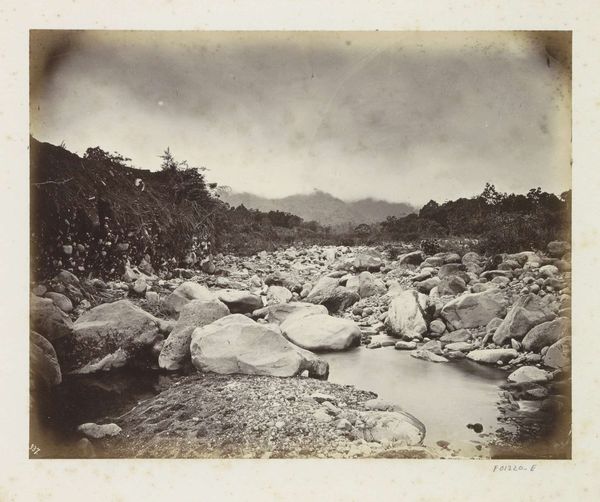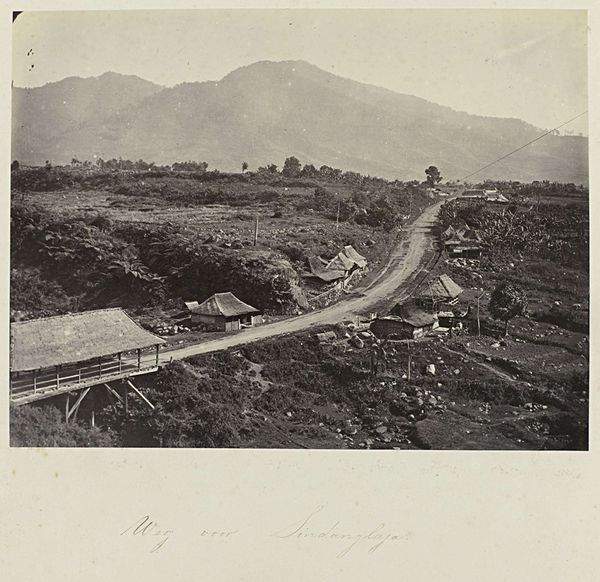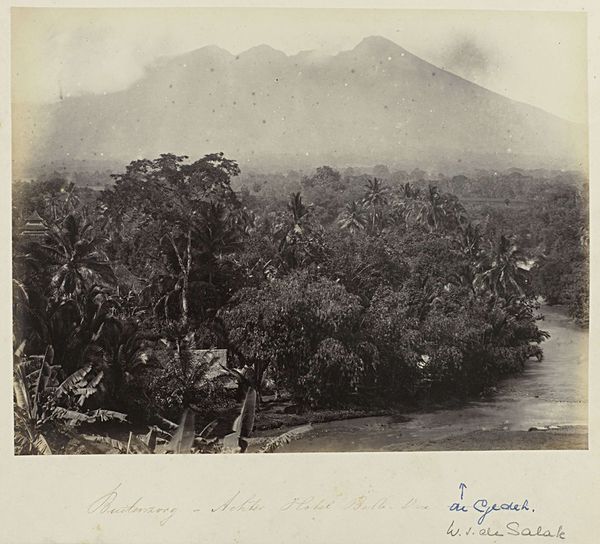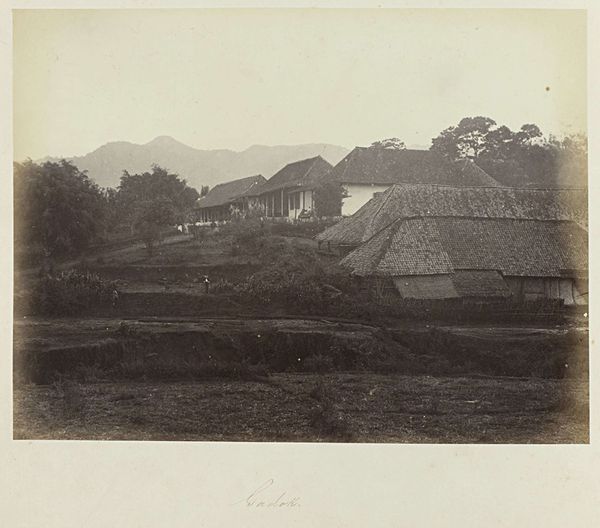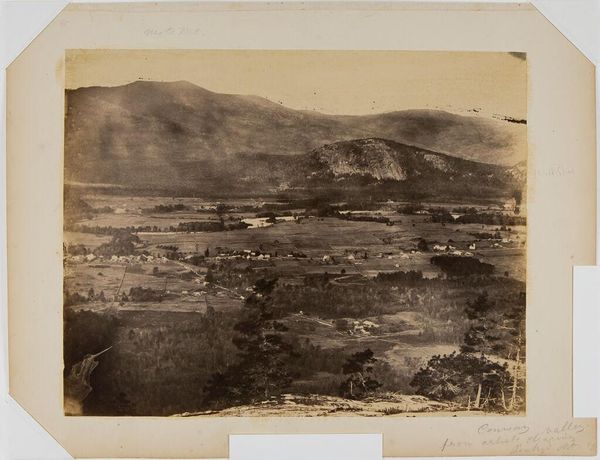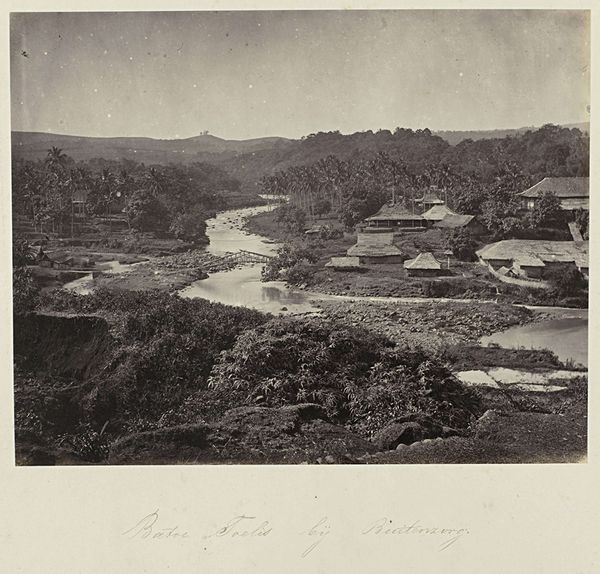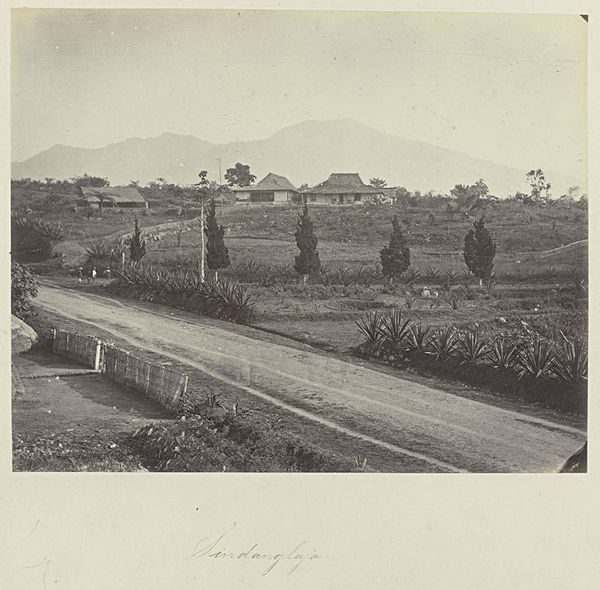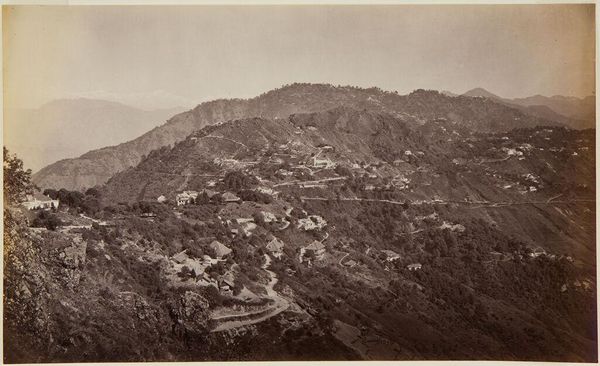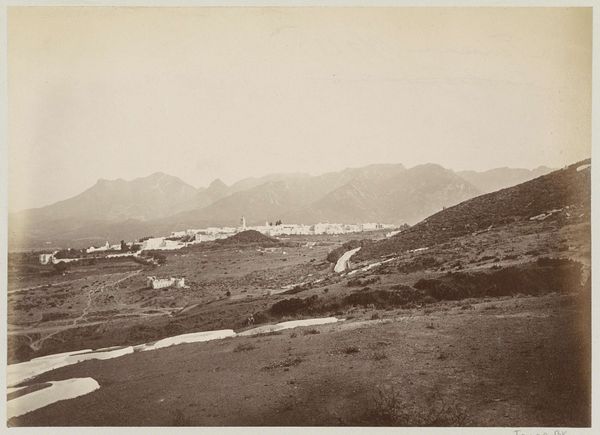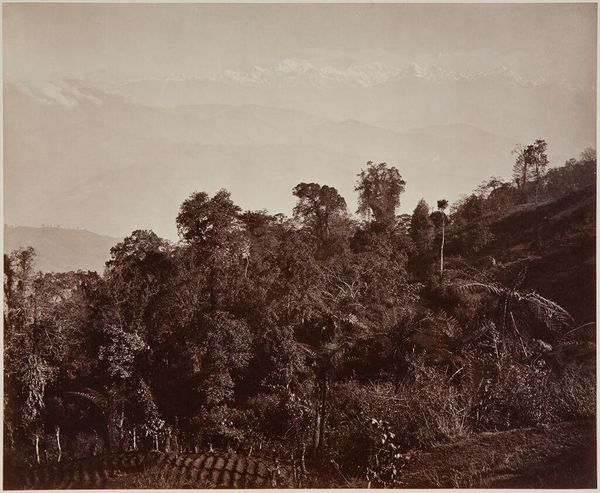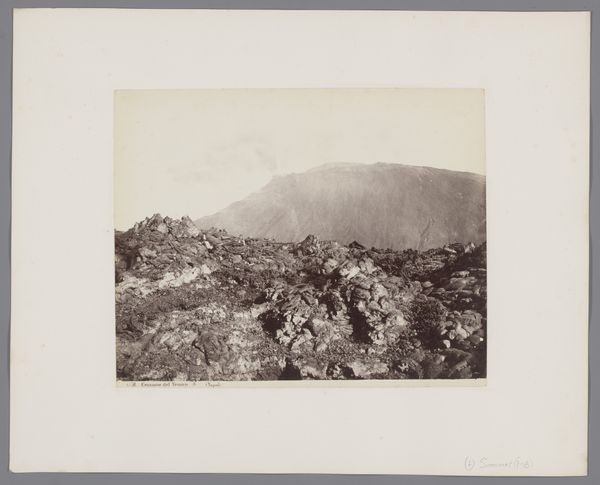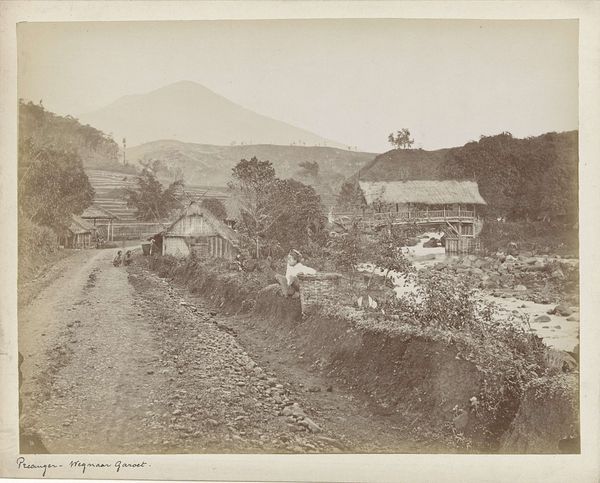
print, photography, albumen-print
#
natural shape and form
# print
#
landscape
#
photography
#
orientalism
#
albumen-print
Dimensions: height 187 mm, width 242 mm
Copyright: Rijks Museum: Open Domain
This photograph, "Weg voor Sindanglaja," by Woodbury & Page, captures a tranquil scene in what was then the Dutch East Indies. Note the towering mountains—symbols of permanence and the sublime—overlooking the humble dwellings nestled in the landscape. Mountains appear throughout art history, from Renaissance landscapes to Romantic paintings, often representing spiritual aspiration or the insignificance of humanity before nature's grandeur. Yet, consider how the mountain differs from, say, the pyramids of Egypt: one is born of the earth, the other built by human hands. The mountain's symbolic weight shifts, becoming less about human ambition and more about the enduring, indifferent power of the natural world. The image evokes a powerful emotional response. The small dwellings dwarfed by the landscape speak to a universal sense of place and belonging, engaging viewers on a deep, subconscious level. This visual language reminds us that symbols don't exist in isolation. They reappear, evolve, and take on new meanings, demonstrating the non-linear, cyclical progression of cultural memory.
Comments
No comments
Be the first to comment and join the conversation on the ultimate creative platform.
